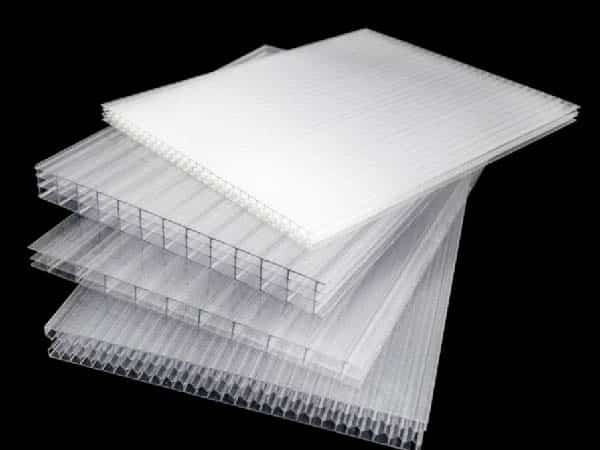A light-deprivation greenhouse uses special shading materials and an automated system to control the duration and intensity of light precisely. It is usually equipped with an advanced automation control system to create the most suitable environment for the growth of various crops. As a grower, This technology allows you to break traditional agriculture’s seasonal limitations, achieve efficient year-round cultivation, and significantly improve crop quality and yield.
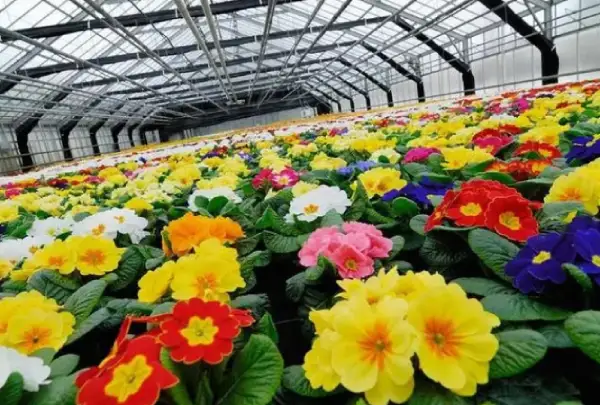
Light-deprivation greenhouses show immense potential and market demand, whether used for commercial cultivation of high-end flowers and medicinal plants or scientific research. As a professional greenhouse manufacturer, we will elaborate on the principles and advantages of light-deprivation greenhouses in this article to better inform you about this advanced greenhouse type.
Light Deprivation Greenhouse Benefits
Light-deprivation greenhouses control light duration and intensity to increase yield and quality and extend the growing season. Plant flowering time is controlled by intrinsic genetic factors and environmental signals, with photoperiod being a key environmental signal affecting plant growth and development. Plants, like humans, perceive day and night changes through light and regulate their physiological activities, such as germination, leaf growth, flowering, and seed formation.
Modern agricultural technology uses light-deprivation greenhouses to regulate the growth cycle of crops. For example, the shading system of a light-deprivation greenhouse can precisely block natural light, ensuring complete darkness when plants need it. The lighting system can simulate the spectrum and intensity of sunlight, providing different light cycles according to the needs of the plants.
Whether your plants require long or short daylight, light-deprivation greenhouses can help you break the environmental limitations of crop growth imposed by the seasons, providing ideal growing conditions year-round.
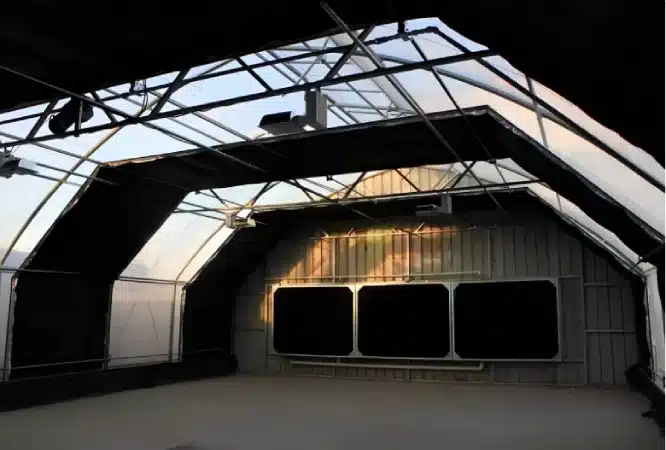
Since light-deprivation greenhouses use blackout curtains, these materials offer excellent insulation, helping to maintain optimal temperature conditions within the greenhouse. Additionally, blackout curtains effectively prevent light pollution from growing lights at night. This feature is crucial for protecting the surrounding environment and ensuring the well-being of nearby residents. By blocking excessive light emissions, blackout curtains contribute to a more sustainable and community-friendly growing operation.
Light Deprivation Greenhouse Applications
Light-deprivation greenhouses are highly effective in regulating the photoperiod necessary for plant growth by controlling crop lighting. They are primarily used for the cultivation of the following crops and scenarios:
- Medicinal Plants: Cannabis is one of the most common medicinal plants requiring a light-deprivation greenhouse. By controlling light, its growth cycle and quality can be optimized. These greenhouses can currently harvest 3-4 seasons per year.
- Flowers: High-end flowers like tulips and chrysanthemums often grow in light-deprived greenhouses. Precise light control helps enhance the flowers’ ornamental value and market price.
- Vegetables: Crops such as mushrooms are also suitable for cultivation in light-deprivation greenhouses, ensuring they grow under optimal conditions.
- Research Laboratories: Some research labs that require full light shielding also need light-deprivation greenhouses to precisely control experimental conditions.
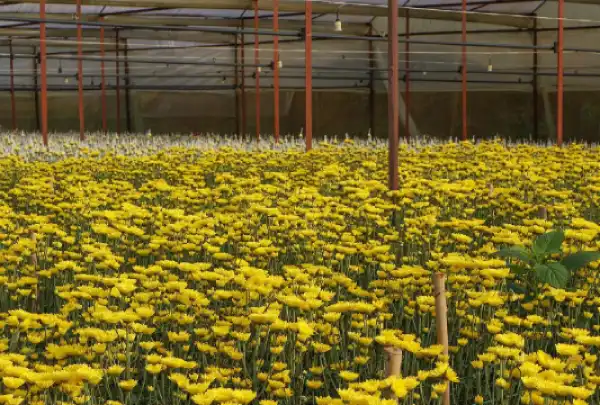
Light-deprivation greenhouses show broad applicability in these fields. If your area (such as high latitudes) cannot meet the photoperiod requirements of plants in some seasons, consider building a light-deprivation greenhouse. Adding a blackout curtain system is also necessary for commercial greenhouses needing to use grow lights at night to avoid light pollution. Many countries have begun legislating against greenhouse light pollution, and violating related laws could result in fines.
Types and Prices of Light Deprivation Greenhouses
The price of a greenhouse can range from a few dollars to several tens of dollars per square foot, primarily depending on factors such as the greenhouse frame, covering materials, and supporting environmental control systems. If you are preparing to invest in a light-deprivation greenhouse, there are three types available, ranging from low to high prices.
1. Low-End Light Deprivation Greenhouse
Low-end light-deprivation greenhouses typically use ordinary plastic hoop structures with an additional layer of blackout curtains covering the plastic film. These curtains can be manually or electrically rolled. This configuration is mainly suitable for small-scale, home, and gardening enthusiasts. Its main advantages are low cost, simple setup, and easy maintenance.
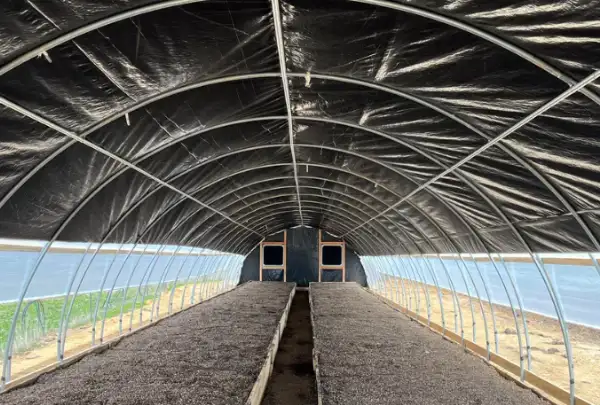
However, since it is not equipped with other greenhouse control systems, temperature and humidity rely more on the natural environment. Its automation level is low, so it relies more on manual labor, suitable for small-scale cultivation with relatively low labor costs. Due to the lower controllability of crop growth conditions, the quality and yield of crops might be slightly lower than those in high-end greenhouses. Consider this type of greenhouse if you are a small-scale grower or your crops do not have high environmental requirements.
2. Mid-Range Light Deprivation Greenhouse
Mid-range light-deprivation greenhouses have significant upgrades compared to low-end ones. These upgrades include using more durable materials for the greenhouse frame and covering materials. The blackout curtain system is inside the greenhouse, and there is an electric control for opening and closing the curtains. Additionally, these greenhouses are equipped with necessary ventilation systems and insect nets.
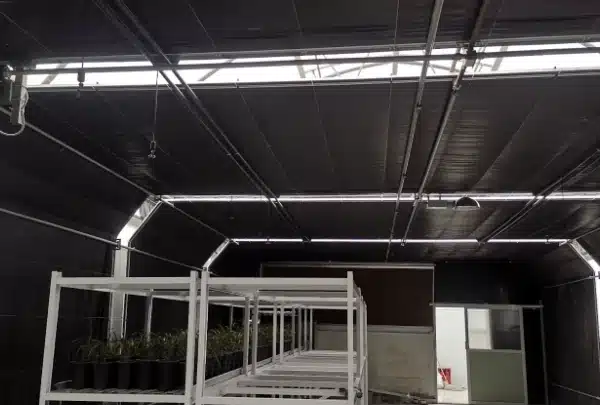
Mid-range greenhouses have a longer lifespan compared to low-end ones. They can provide more precise photoperiods and other environmental factors needed for crops, thus improving growth efficiency and quality. Growers can choose additional smart system configurations according to actual needs, such as fully automated control systems, exemplary mist systems, and heating systems.
3. Mid-Range Light Deprivation Greenhouse
High-end light-deprivation greenhouses use the most advanced greenhouse technologies available. These greenhouses usually use the most advanced materials, such as high-strength glass or multi-layer composite materials for covering, ensuring the best insulation and light transmission performance. The blackout shading system achieves full automation and automatically adjusts light intensity and duration according to plant needs and monitored environmental conditions. With high-precision environmental monitoring systems and intelligent control systems, these greenhouses can monitor temperature, humidity, CO2 concentration, and other environmental parameters in real-time, providing feedback and adjusting the parameters.
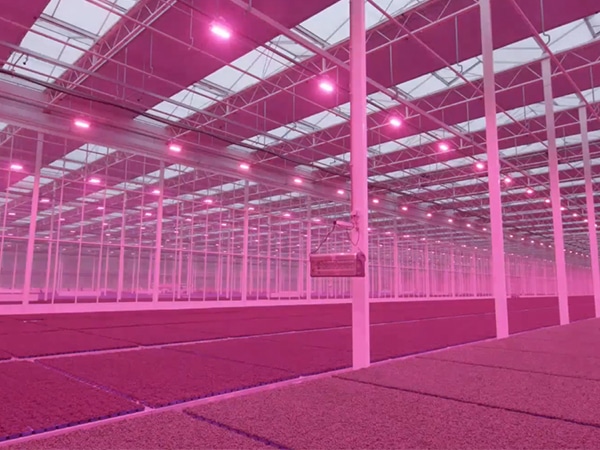
Moreover, high-end light deprivation greenhouses might be equipped with advanced irrigation systems, nutrient supply systems, and light spectrum adjustment systems to ensure the ideal growing conditions for crops. Suppose you are a large commercial grower considering entering the high-end flower market or a research institution needing precise experimental condition control. In that case, this fully automated light-deprivation greenhouse is your best choice. Although the initial investment cost is higher than the other types of greenhouse and can reach more than 20 dollars per square foot, its efficient production and high quality provide significant economic benefits in the long run.
Conclusion
This article explains how light-deprivation greenhouses break the seasonal limitations of traditional agriculture by controlling light duration and intensity, achieving efficient year-round cultivation. They suit various needs, from small-scale home growing to large-scale commercial cultivation. Low-end configurations are suitable for cost-sensitive small growers; mid-range configurations enhance environmental control precision through smart systems, suitable for medium-scale growers; high-end configurations are almost entirely automated, suitable for large-scale commercial growers and research institutions.
As a professional greenhouse manufacturer, INSONGREEN can provide various configurations of light-deprivation greenhouses to meet customers’ different needs, helping you improve the quality and yield of your crops. If you want to know the latest price of a light-deprivation greenhouse, please contact us.
